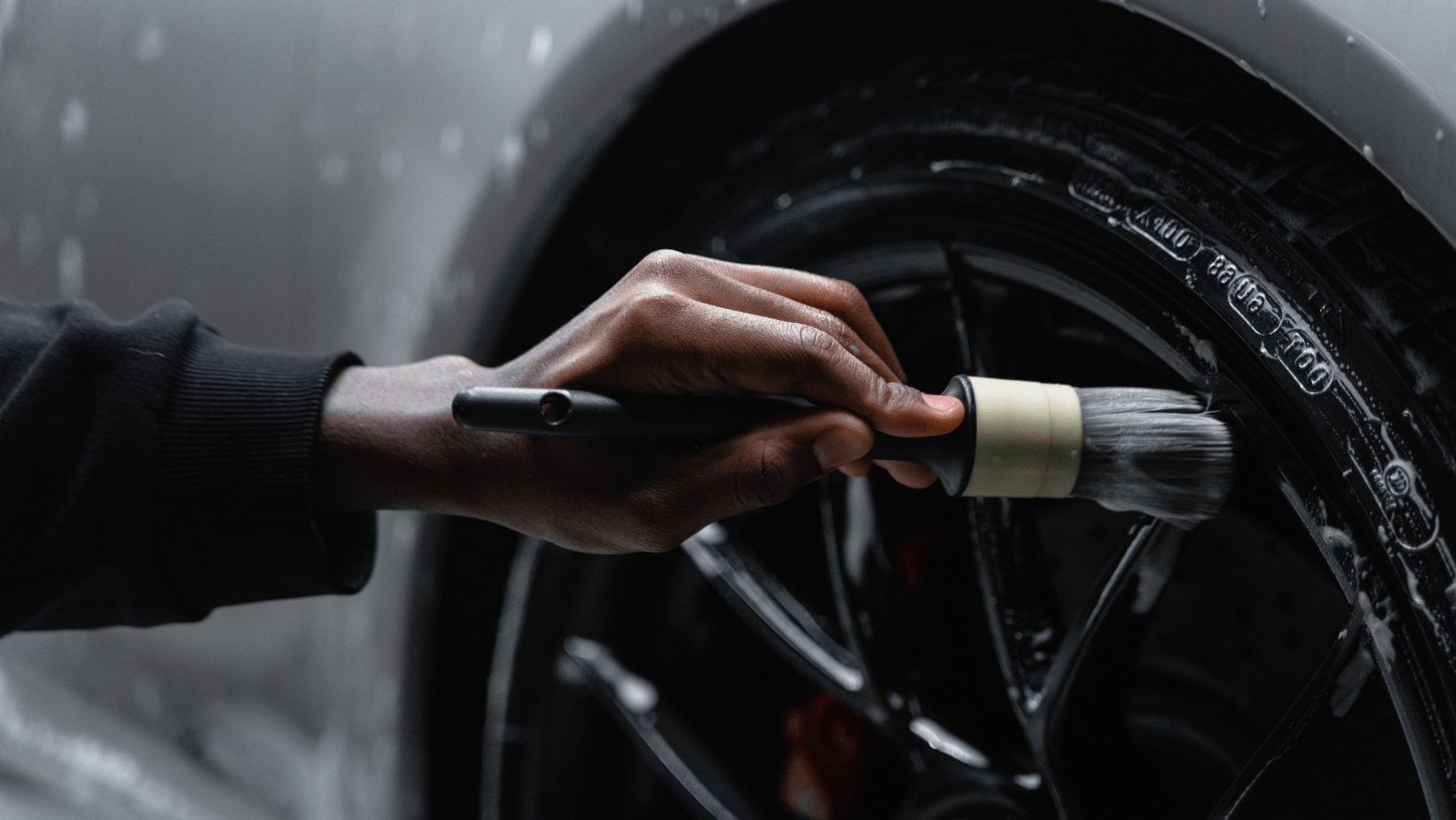Table of Contents
What Are Tires Made Of?
Tires play a crucial role in vehicle performance, safety, and efficiency. While they may appear to be simple rubber rings, they are complex engineering components designed to handle varied road conditions, temperature changes, and vehicle loads. Understanding tire materials and construction helps drivers make informed decisions when selecting the right tires for their vehicles.
Key Takeaways
- Importance of Tire Materials: Affects performance, longevity, and safety.
- Construction Techniques: Influences durability and response to various driving conditions.
- Materials Used: Varies from traditional rubber to advanced composites.
- Impact on Vehicle Performance: Directly influences grip, handling, and fuel efficiency.
- Choosing the Right Tires: Key to optimizing vehicle performance and safety.

Understanding Tire Materials: More Than Just Rubber
Tires are crafted from a combination of natural and synthetic rubber, along with other advanced materials to enhance durability, grip, and efficiency. The quality and composition of these materials determine how a tire performs in different conditions.
Primary Materials in Tire Manufacturing
- Natural Rubber
- Sourced from rubber trees, it provides elasticity and durability.
- Used in tread compounds to improve traction and wear resistance.
- Synthetic Rubber
- Includes butadiene rubber (BR) and styrene-butadiene rubber (SBR).
- Offers better resistance to wear and extreme temperatures.
- Silica
- Enhances traction, especially in wet conditions.
- Reduces rolling resistance, improving fuel efficiency.
- Carbon Black
- Strengthens the rubber, extending tire life.
- Improves heat dissipation, reducing blowout risks.
- Steel Belts
- Embedded within the tire structure for added strength and stability.
- Helps maintain tire shape and prevent punctures.
- Textile and Nylon Reinforcement
- Used in high-performance and all-terrain tires to provide flexibility and durability.
- Kevlar
- Found in high-performance and off-road tires for increased toughness and impact resistance.
The blend of these materials varies depending on tire type, driving conditions, and performance requirements.

Tire Construction: The Anatomy of Performance
Tire construction involves multiple layers, each serving a specific function. The two most common tire types are radial tires and bias-ply tires, with radial tires being the preferred choice for passenger vehicles due to their improved performance and efficiency.
Key Tire Components
- Tread
- The outermost layer that makes contact with the road.
- Designed with specific tread patterns for traction, handling, and water dispersion.
- Belts and Plies
- Steel belts reinforce the tread area, improving strength and puncture resistance.
- Fabric plies (made from polyester, nylon, or Kevlar) provide flexibility and shape retention.
- Sidewall
- The portion between the tread and the bead.
- Determines ride comfort, cornering stability, and impact resistance.
- Bead
- Secures the tire to the wheel, ensuring an airtight fit.
- Reinforced with steel wire for added strength.
- Inner Liner
- A layer of rubber inside the tire that retains air and prevents leaks.
Radial vs. Bias-Ply Construction
| Tire Type | Construction | Advantages | Ideal Use |
|---|---|---|---|
| Radial | Steel belts run perpendicular to the tread | Longer lifespan, improved fuel efficiency, better road grip | Passenger vehicles, performance cars, SUVs |
| Bias-Ply | Layers of fabric crisscross at angles | Stronger sidewalls, more flexible structure | Heavy-duty vehicles, off-road applications |
Most modern vehicles use radial tires due to their superior performance, handling, and efficiency.

Matching Tires to Your Vehicle and Driving Style
Selecting the right tires requires an understanding of:
- Vehicle Type: Performance vehicles need high-grip tires, while SUVs require durable all-terrain options.
- Driving Conditions: Wet, dry, snowy, or off-road conditions affect tire selection.
- Performance Needs: Some drivers prioritize fuel economy, while others need maximum cornering grip.
For sports cars, high-performance tires with silica-infused compounds provide superior grip. For SUVs and trucks, reinforced sidewalls and tread designs improve off-road capability and load capacity.
The Impact of Tire Choice on Safety and Performance
The right combination of materials and construction techniques significantly affects:
- Handling: High-quality tires improve steering response and braking efficiency.
- Fuel Efficiency: Low rolling resistance tires reduce energy consumption.
- Durability: Premium materials extend tire life and resistance to wear.
- Weather Performance: Specialized compounds provide better grip in rain, snow, or heat.
Common Tire Materials and Their Functions
| Material | Function | Impact on Performance |
|---|---|---|
| Natural Rubber | Enhances elasticity and durability | Increases grip and flexibility |
| Synthetic Rubber | Improves temperature resistance | Enhances longevity and fuel efficiency |
| Silica | Boosts wet traction and reduces rolling resistance | Improves braking and fuel economy |
| Carbon Black | Strengthens tire structure | Increases wear resistance |
| Steel Belts | Reinforce the tread area | Reduces puncture risks |
| Kevlar | Provides high-impact resistance | Ideal for off-road and high-speed performance |
Choosing the Right Tires for Your Needs
When purchasing new tires, consider:
- Tread Pattern: Determines traction in wet, dry, and off-road conditions.
- Load Rating: Ensures the tires can handle your vehicle’s weight.
- Speed Rating: Matches your driving habits and vehicle performance requirements.
- Seasonal Considerations: Summer, all-season, and winter tires offer different benefits.
Tire Maintenance for Longevity
To maximize tire lifespan and performance:
- Check Tire Pressure Regularly: Underinflated tires increase wear and reduce fuel efficiency.
- Rotate Tires Every 5,000-8,000 Miles: Ensures even tread wear.
- Inspect for Damage: Look for cracks, punctures, or bulges.
- Balance and Align Tires: Improves handling and prevents uneven wear.
Final Thoughts on Tire Materials and Construction
Tires are more than just rubber—they are complex engineering components designed for specific driving needs. Understanding what tires are made of and how their construction impacts performance, safety, and longevity allows drivers to make informed purchasing decisions.
Key Benefits of Understanding Tire Materials and Construction
- Enhanced Performance: Tires with advanced materials and design provide better traction and stability.
- Greater Safety: Proper tire selection reduces accident risks and improves braking response.
- Increased Durability: High-quality materials ensure longer tread life and resistance to wear.
- Optimized Fuel Economy: Tires with low rolling resistance enhance efficiency.
By investing in the right tire materials and construction, drivers can improve their vehicle’s safety, performance, and fuel efficiency, ensuring a smoother and more enjoyable driving experience.
Additional Resources
Check out the best performance car gear available on the market.


